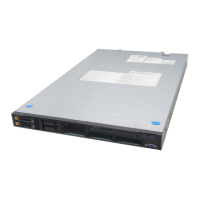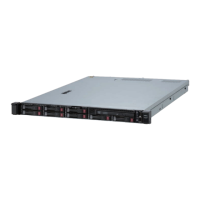Configuring Your Server 4-15
I/O Device Configuration
The screen shown below appears if you select "I/O Device Configuration" on the Advanced menu.
See the table below for the items.
IMPORTANT: Note that the interrupt and/or base I/O address are not overlapped with
others. If the value set for the interrupt or base I/O address is used in another resource, the
yellow asterisk (*) appears. Reset any item with the yellow asterisk properly.
Option Parameter Description Your Setting
Serial Port A Disabled
[Enabled]
Selects whether serial port A is
enabled or disabled.
Base I/O address [3F8]
2F8
3E8
2E8
Selects the base I/O address for serial
port A.
Interrupt IRQ 3
[IRQ 4]
Selects the interrupt for a serial port A.
Serial Port B Disabled
[Enabled]
Selects whether serial port B is
enabled or disabled (display only).
Base I/O address 3F8
[2F8]
Selects the base I/O address for serial
port B.
Interrupt [IRQ 3]
IRQ 4
Selects the interrupt for a serial port
B.
Parallel Port [Disabled]
Enabled
Selects whether the parallel port is
enabled or disabled.
Mode [Bi-directional]
EPP
ECP
Selects the operation mode of the
parallel port.
Base I/O address [378]
278
Selects the base I/O address for
parallel port.
Interrupt IRQ 5
[IRQ 7]
Selects the interrupt for a parallel port.
PS/2 Mouse Disabled
[Enabled]
If disabled, PS/2 mouse port will not
function.
USB Controller Disabled
[Enabled]
If disabled, the USB ports do not
accept the USB device class 3 (HID:
Human Interface Deice).
USB 2.0 Controller Disabled
[Enabled]
If disabled, the USB2.0 device will not
function.
Legacy USB
Support
Disabled
[Enabled]
Selects whether the USB keyboard is
made available in OS which does not
support USB formally.

